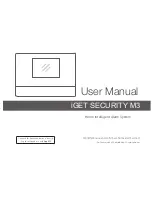
6
ENVIRONMENTAL SPECIFICATIONS
1. High Temperature
Design to meet MIL-STD-810C, method 501.1 procedure II
Operating temperature:
+70 °C (+160 °F)
Storage temperature:
+85 °C (+185 °F)
2. Low Temperature
Design to meet MIL-STD-810C, method 502.1, procedure I
Operating temperature:
–40 °C (–40 °F)
Storage temperature:
–55 °C (–65 °F)
3. Humidity
Design to meet MIL-STD-810C, method 507.1, procedure IV
Relative humidity of up to 95% for the operational temperature range.
4. Salt Fog
Design to meet MIL-STD-810C, method 509.1, procedure I
Exposure to a 5% Salt Solution Fog for 48 hours.
5. Dust
Design to meet MIL-STD-810C, method 510.1, procedure I
Exposure to a dust concentration of 0.3 frames/cubic ft at a velocity of 1750 fpm, for 12 hours
6. Vibration
Design to meet MIL-STD-810C, method 514.2, procedure VIII
Vibration at an acceleration of 1.1g within the frequency range of
5-30 Hz, and an acceleration of 3g within the frequency range of 30-500 Hz
#UL 1254 – Section 43 to meet off-road vehicle protection
7. Mechanical Shock
Design to meet MIL-STD-810C, method 516.2, procedure I
Mechanical Shock of 30g half-sin wave, for 11 msec
#UL 1254 – Section 43 to meet off-road vehicle protection
8. Electromagnetic Compatibility (EMC)
This product is in conformance with EMC directive 89/336/EC
Radiated Emission:
EN61000-6-3
Conducted Emission:
EN61000-6-3
Radiated Immunity:
EN61000-4-3
Conducted Immunity:
EN61000-4-6
ESD
EN61000-4-2
Burst
EN61000-4-4
Surge
EN61000-4-5
ENVIRONMENTAL SPECIFICATIONS
7-1-07
Page 11
REV. 1




































